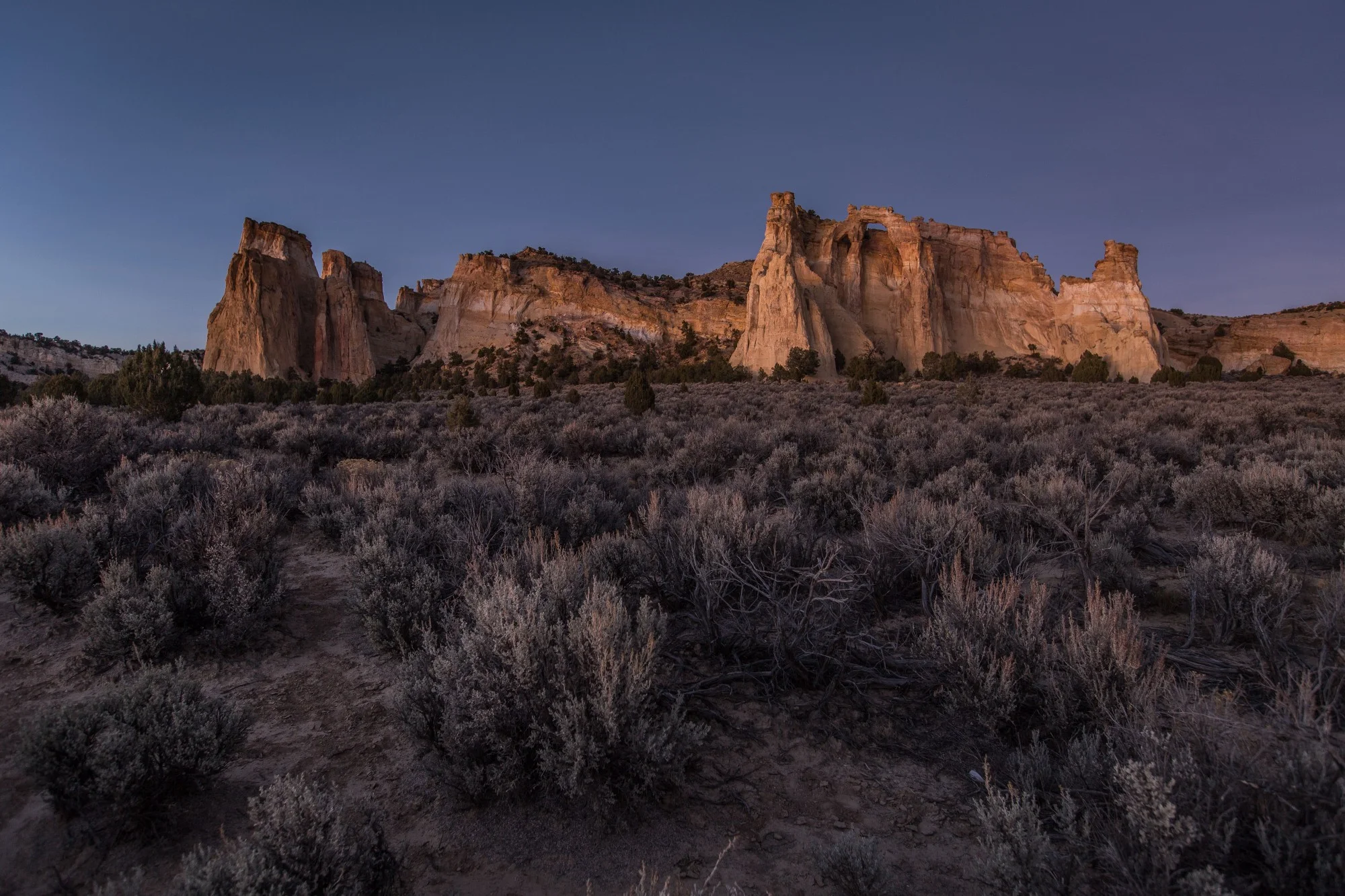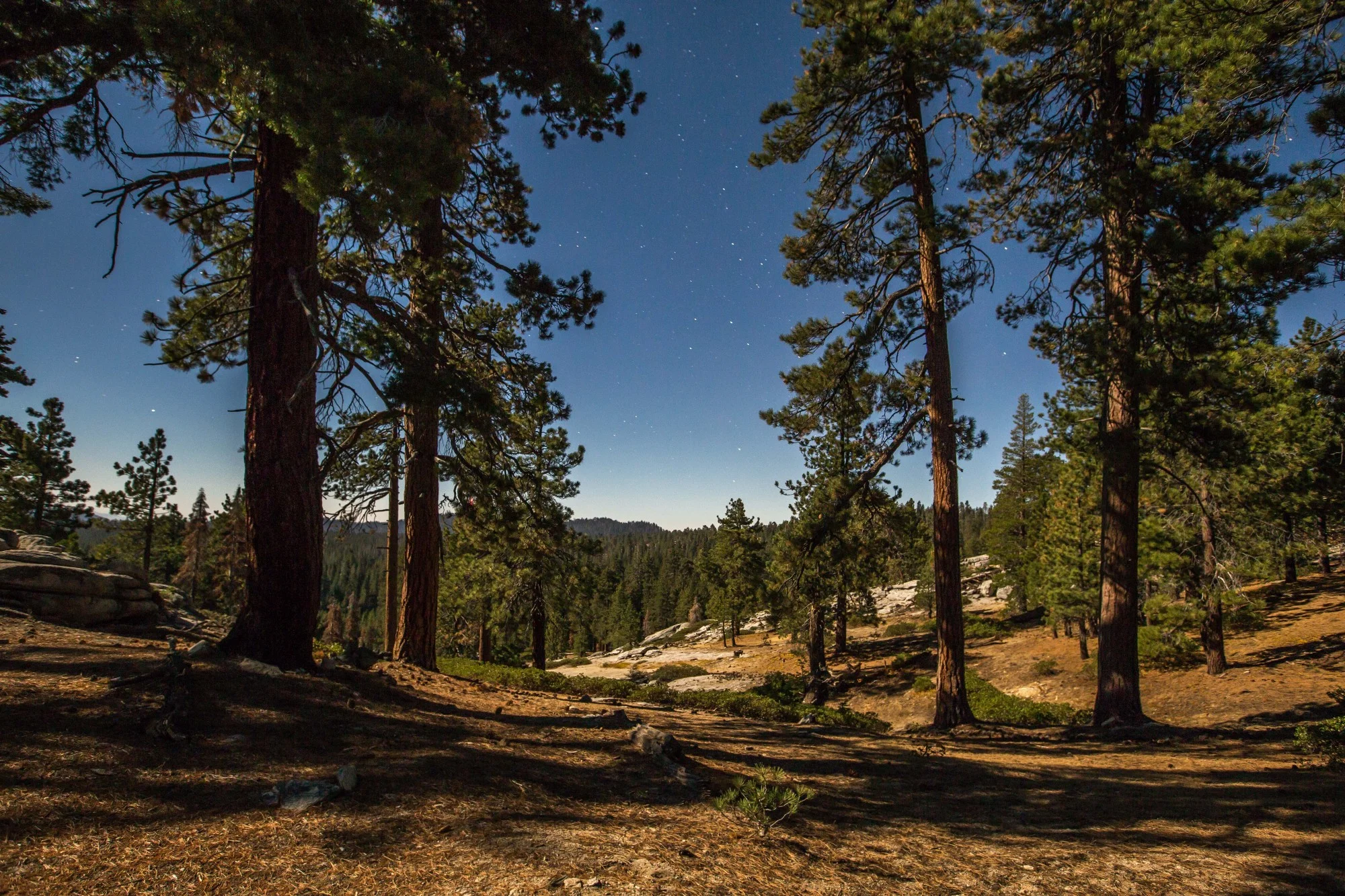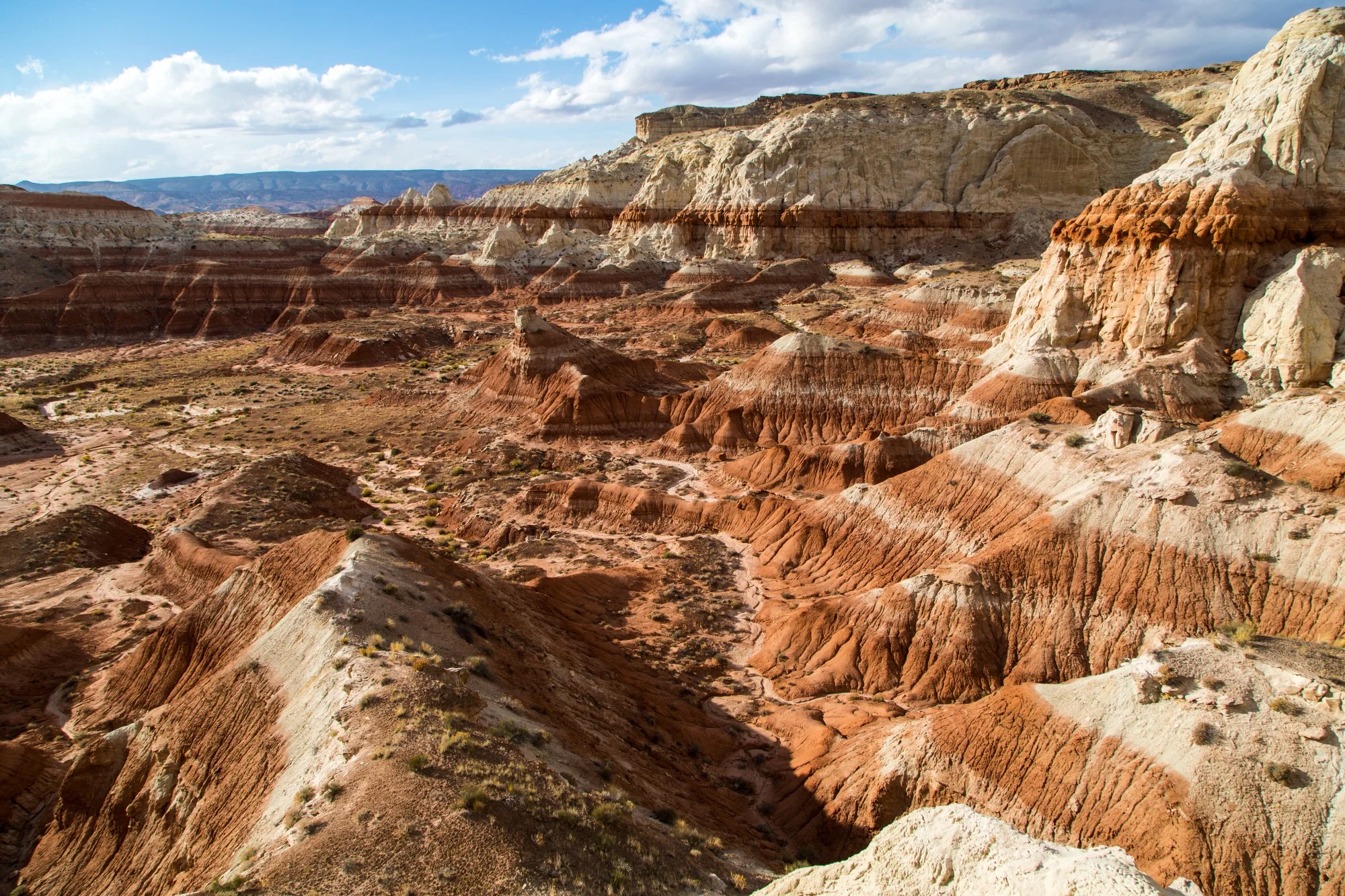GOLD BUTTE NATIONAL MONUMENT: Conversations in the Desert
Text: Andreea Lotak; Photos: Justin & Andreea Lotak · 8 min read
Jim, introducing us to a beautiful part of Gold Butte National Monument
The two full days we got to spend in Gold Butte National Monument are as much about the outstanding beauty of the place as they are about the thoughtful lessons and conversations we exchanged with Jim Boone. He is on the Board of Directors of Friends of Gold Butte, is helping to coordinate the Friends of Basin and Range group, and has become a leading expert of Nevada’s outdoors. We marveled at what he showed us, felt inspired by what he had to say, and at times laughed under the stars of the Mojave Desert.
We met Jim at the event in Mesquite, NV, where we met Jaina Moan, Executive Director of Friends of Gold Butte (story here). We were lucky to have him volunteer to show us around the monument for the next two days. He’s been visiting Gold Butte for 15 years and joined the Board 2 years ago. Over the years, he has led many guided tours, having the knowledge from his profession as an ecologist. Jim’s love for recreation and wilderness has a long history, going back to the days when he was a climber in Yosemite. As places became more crowded and he was in search for a solitary experience, he ended up in Gold Butte. “What’s special about Gold Butte is that it’s a big, wide open space where I can go to find solitude and recreate in the ways that I like to recreate. I can also do things that I think are useful for helping the landscape and the ecology, and I can get people out there to learn about the place, which inspires them to go on and help protect it too.”
Jim’s voice is never rushed, and when he starts a story you have the feeling that you’re about to become part of a lesson that will make you wiser. We exchanged ideas and talked at length about conservation, society, ecology, public lands, and more. When we sat down to do the interview it was nighttime, our lamps were turned dim, and behind us the rock walls of a stunning area known as “Little Finland” were lit up gently by the moon and the stars. We talked about the night sky too. “I bring people out at night and Friends of Gold Butte hosts star parties. People will come out here and say ‘I’ve never seen stars like these before in my life’. It’s really exciting for them and they’ll stare at the sky for an hour. It’s fun to bring people out and help them experience stuff like this…”. Indeed, exploring the monument with Jim allowed us to know it more in depth. When we ask about the best time to visit, the answer is one that we were expecting, but it sounds better coming from him: “Springtime, when the annual wildflowers are blooming. Spring is really spectacular out here. You get all this jumbled up landscape, and these wild cliffs and sandstone, while the ground is carpeted with whites, and yellows, and purples. Just all kinds of colorful things. That’s when wildlife is more active too: they come out to feed, and you expect to see tortoises mostly in springtime.”
Jim explaining about some of the petroglyphs and the patina or desert varnish, a coating on the rock left by bacteria and fungi. It adds a darker layer to the rock, which gives an insight into the time when these stories were inscribed.
Gold Butte was designated a national monument in 2016, after more than a decade of grassroots work by conservation groups and tribes from the region to pass some form of legislation to protect this ecosystem. At almost 300,000 acres, it was a missing piece in a large-scale conservation landscape: it connects Lake Mead Recreation Area with Grand Canyon - Parashant National Monument, which then borders Grand Canyon National Park. With a mix of Mojave Desert, Great Basin, and Colorado Plateau ecosystems, the monument is home to a beautiful and rare biodiversity. The human history of the monument is no less impressive, and the incredible rock formations were used as canvas for the hundreds of petroglyphs created by the first peoples living in this area. The name Gold Butte comes from the more modern history of post-colonial exploitation of the land. Grazing has been part of the 19th and 20th century history of the region, and we learned from Jim that the native bunchgrass went almost entirely extinct within the first years of introducing cattle to this harsh environment. More recently, a few years ago, Gold Butte was the scene of an armed stand-off between law enforcement and the Bundy family, ranchers whose property is located north of the monument.
The complicated, stunning landscape of the “Little Finland” area in Gold Butte
It’s a peaceful place now, however. And a harsh one too. Visitors have started to come in larger numbers since the monument was created, especially after the recent review that brought it to the attention of a wider public, but it’s still mostly a solitary experience. When talking to Jim under the starry sky, we asked him what he thinks is important to keep in mind for someone who visits Gold Butte. After a short pause, he said: “Well, it’s wild and rugged country so you need a to have a can of Fix-A-Flat in your car (laughs). No… Gold Butte is all about this really jumbled up landscape, with this wild, erratic geology. When you look at it, it just doesn’t make sense. And when some geologist spins a yarn on how it got this way, you’re shaking your head thinking ‘that guy is full of it’. But it’s true (laughs). And then on the same landscape you have 10-12,000 years of human habitation. We know that in the old days there was a little more water and a little more vegetation for Native people to use. But nonetheless, they made a living out here for some 12,000 years. So it’s really amazing to think about the lives of these people and of how they survived out here. And then, in 1860, somewhere in that time frame, the sheep herders came in, Basque shepherds. Up in central Nevada we still have lots of Basque shepherds and communities that celebrate their heritage. They brought some sheep down here until the cattlemen ran them out. Then there’s a whole long story of running cows here and how that affected the land, and the drying climate and how people adapted to that. Then, there’s the mining industry. They never made very much money from mining in this area, but they sure put in a heck of a lot of effort. It’s always interesting to go out and look around the old mine sites, though you shouldn’t go in the mines because none are safe anymore. But you can look in and think about the lives of the men that worked in these holes in the ground, trying to pull out riches. They all went away disappointed, except for maybe the guy selling Levi’s or picks and shovels. But it’s just a long complicated geologic history, and then there’s a long complicated human history. And it’s how those two are meshed together with the climate. Yeah, keeping those notions in mind is what people should do when they come out here… In addition to bringing a can of Fix-A-flat (laughs).”
A few of the numerous petroglyphs standing testimony to the habitation and passage of Native people throughout this beautiful region. When visiting these sites, respect is important. They hold a sacred importance for several tribes and they are fragile traces of our human history.
“GOLD BUTTE IS ALL ABOUT THIS REALLY JUMBLED UP LANDSCAPE, WITH THIS WILD, ERRATIC GEOLOGY. WHEN YOU LOOK AT IT, IT JUST DOESN’T MAKE SENSE. AND WHEN SOME GEOLOGIST SPINS A YARN ON HOW IT GOT THIS WAY, YOU’RE SHAKING YOUR HEAD THINKING: ‘THAT GUY IS FULL OF IT’. BUT IT’S TRUE (LAUGHS). AND THEN, ON THE SAME LANDSCAPE YOU HAVE 10-12,000 YEARS OF HUMAN HABITATION…”
This national monument harbors a complex treasure of geology, archaeology, history, biodiversity, and ecology, and it is one of the monuments listed to be shrunk in size at the recommendation of Secretary Zinke. Any part of this conservation land removed will represent a loss. However, the part that Friends of Gold Butte and other groups expect to see chopped off could mean a huge loss. “At this point we don’t really know, but our best guess is that it will be the area where the Virgin Valley Water District has water rights and wants taken out of the monument. There’s a couple of springs where they have water rights, but the presidential proclamation for Gold Butte states that those water rights will be respected. In fact, now they are enshrined in law, which is better than it was before. But they want an area of about 25 square miles cut out, while the springs are all right along the north edge of this 25 sq mi area. What they want is the whole north face of the Virgin mountains, including Virgin Peak. On the north slope there is a Pleistocene relict forest: a bunch of tree species and associated plants that have been around since the last Ice Age. The problem with cutting out this entire section is that it would eliminate the place to see this relict forest. During the Ice Age, those tree and plant species would have lived all along the top of mountain range, while down in the flats there was a Pinyon-Juniper forest. Then, as the desert dried out and heated up, the pinyons couldn’t live down here and expanded to higher elevations. On the hot and dry south side of Virgin Peak, the pinyons and junipers moved all the way to the summit. All of the ponderosa pine, white fir, Douglas fir, and other species that had been on the top of the mountain died off on the south-facing slopes and were replaced by the pinyon and juniper trees. But the north side of the mountain is really, really steep and the sun hardly ever shines over there. During winter, that’s where snow accumulates and lasts the longest. So on the north side, you have this cooler, wetter microclimate. The tree species that were eliminated by the climate elsewhere survive on this north-facing slope. It’s a really special piece of habitat in southern Nevada, there’s really nothing else like it. There are ponderosa pines and white fir up there, there is the only population of Douglas fir in southern Nevada, there’s some Arizona cypress - the only ones in Nevada. Plus, there are shrubs and other plants that you would expect to find in a high-elevation forest. All of this makes it a really valuable ecosystem, a relict ecosystem, where people can study plants and their interactions, and how they’re surviving. We would really hate to see that area eliminated from the monument".
We only traveled to that forest through Jim’s description, but what it represents touched us. There is something about places like this that makes us think that if we never get to see them, at least our children or theirs might. The existence of this forest in Gold Butte and the breathtaking beauty of the human and geologic history of the monument are but a small portion of a desert ecosystem upon which we’ve largely built and developed. Keeping small places like this one protected should be a bipartisan mission; those opposing it either misunderstand or are being misled by political agendas. Free access and a wide range of activities are permitted in the monument, and private property and water rights are respected. What the protection accomplishes is a more responsible management of the area, the guarantee that no large development will be put on top of a millenary cultural heritage, impressive geology, and the rare desert biodiversity.
Gold Butte after sunset















To date, President Joe Biden has designated five national monuments since coming to office in 2021. Here we take a look at four of those five national monuments that had a land conservation element, and what might be on the slate before the end of his first term.